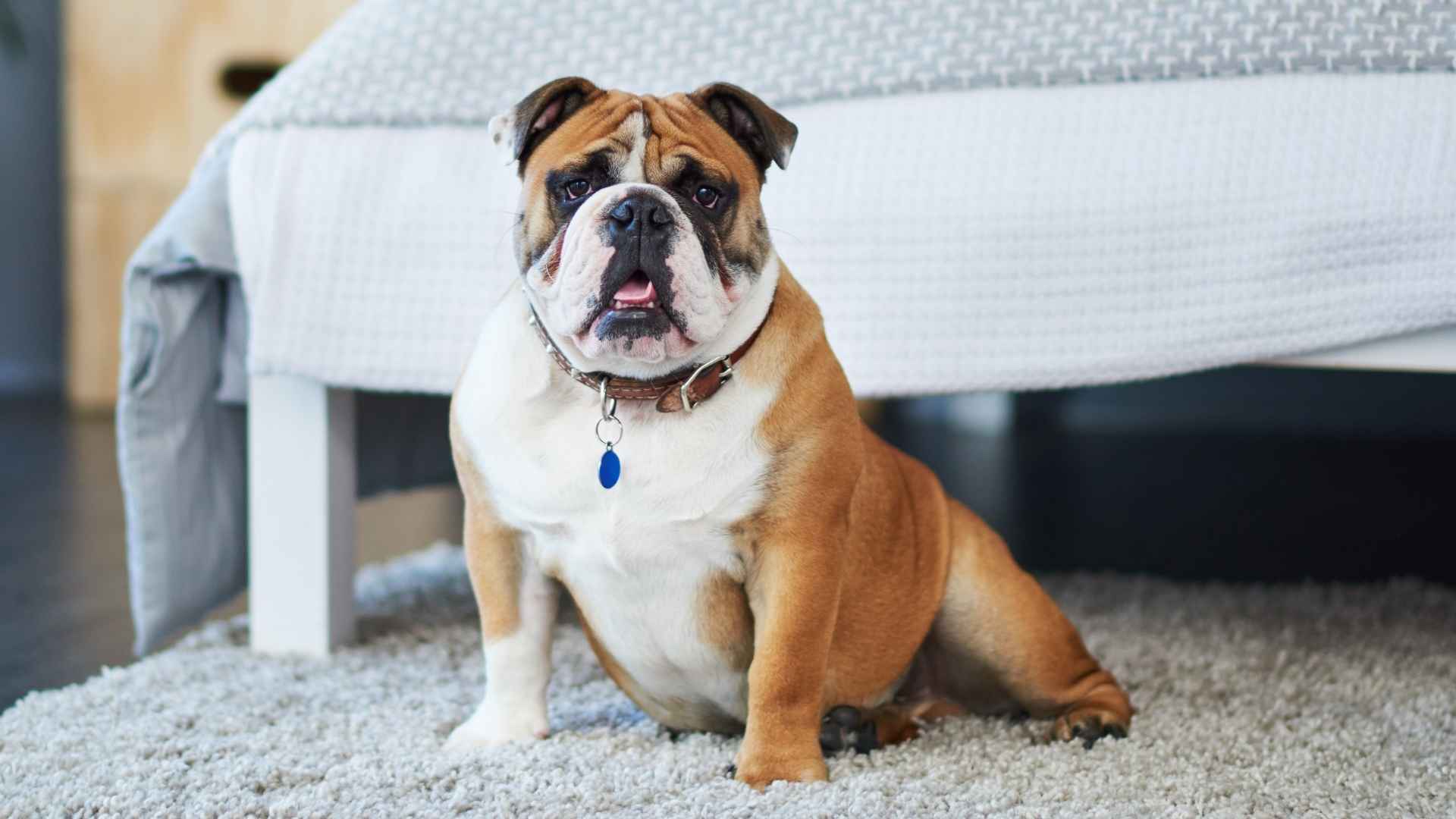“Happiness is a warm puppy.” Charles Schulz said that, but he never specified how big the puppy had to be.
In truth, happiness can come in the form of a medium-sized dog who knows how to be gentle, calm, and respectful of close living quarters. Many people assume apartment dogs must be small, but the real key is compatibility, not size.
Dogs who don’t bark excessively, jump on neighbors, or need wide-open spaces can live happily in apartments, even without a backyard. Medium-sized dogs can offer that perfect in-between: enough presence to feel protective and enough self-control to remain relaxed indoors.
If you’re looking for a dog who fits your lifestyle and your lease agreement, this guide shares medium-sized breeds that excel in apartment settings. They’re the ones who stay calm through hallway noise, elevator rides, and shared walls—and make perfect city companions.
Apartment Safe Medium Dog Breeds
1. American Staffordshire Terrier
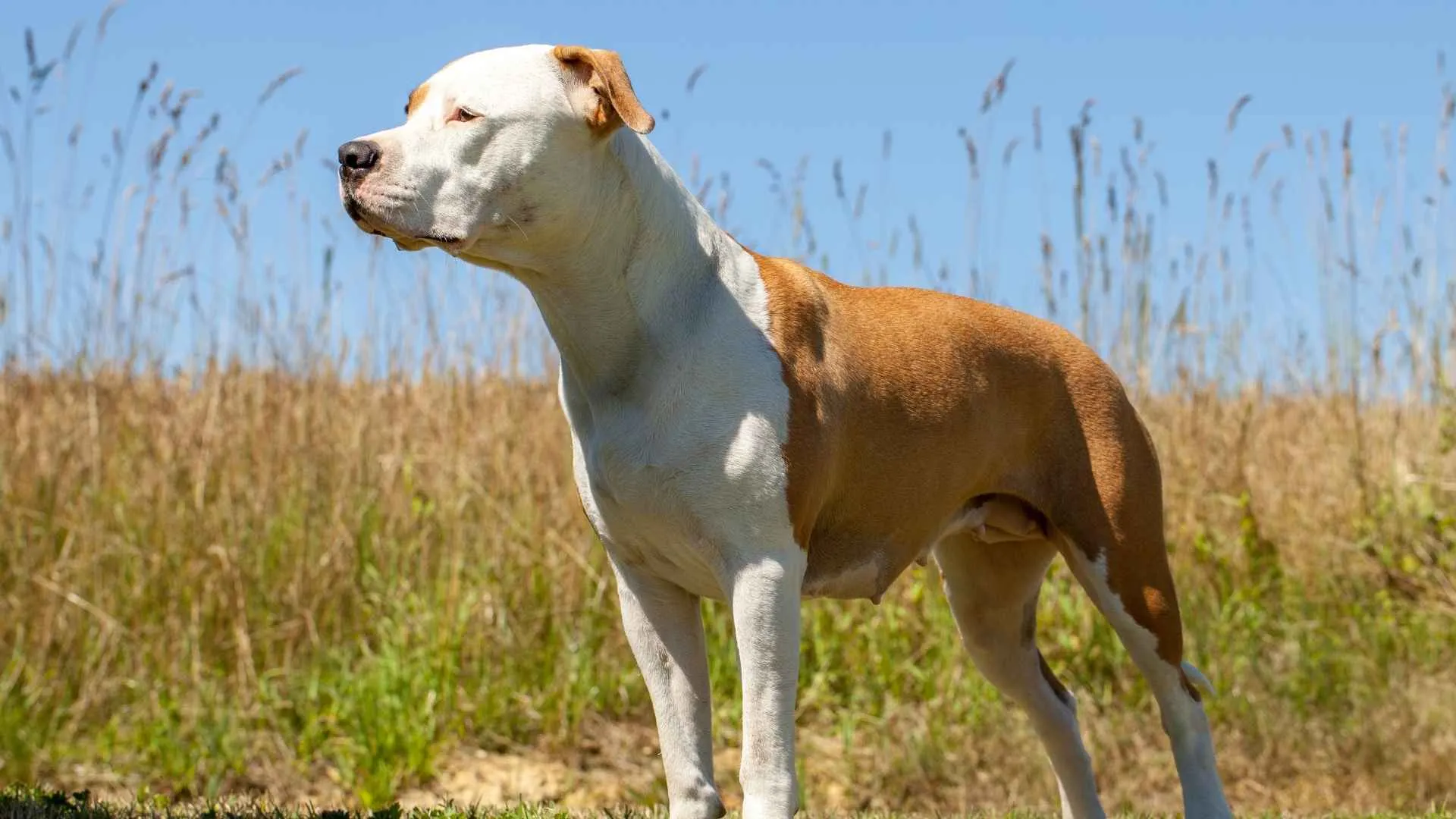
This breed often surprises people with how relaxed they are indoors, especially after a structured walk. They enjoy resting quietly for long hours without becoming restless or destructive. A steady routine helps them manage their strength in small living spaces.
Responds Well in Apartment Routines
They’re smart and can quickly learn what’s expected in shared apartment settings when given early, firm guidance. Consistent training makes them attentive, respectful, and more focused. Clear boundaries and short commands often work best in maintaining indoor calm.
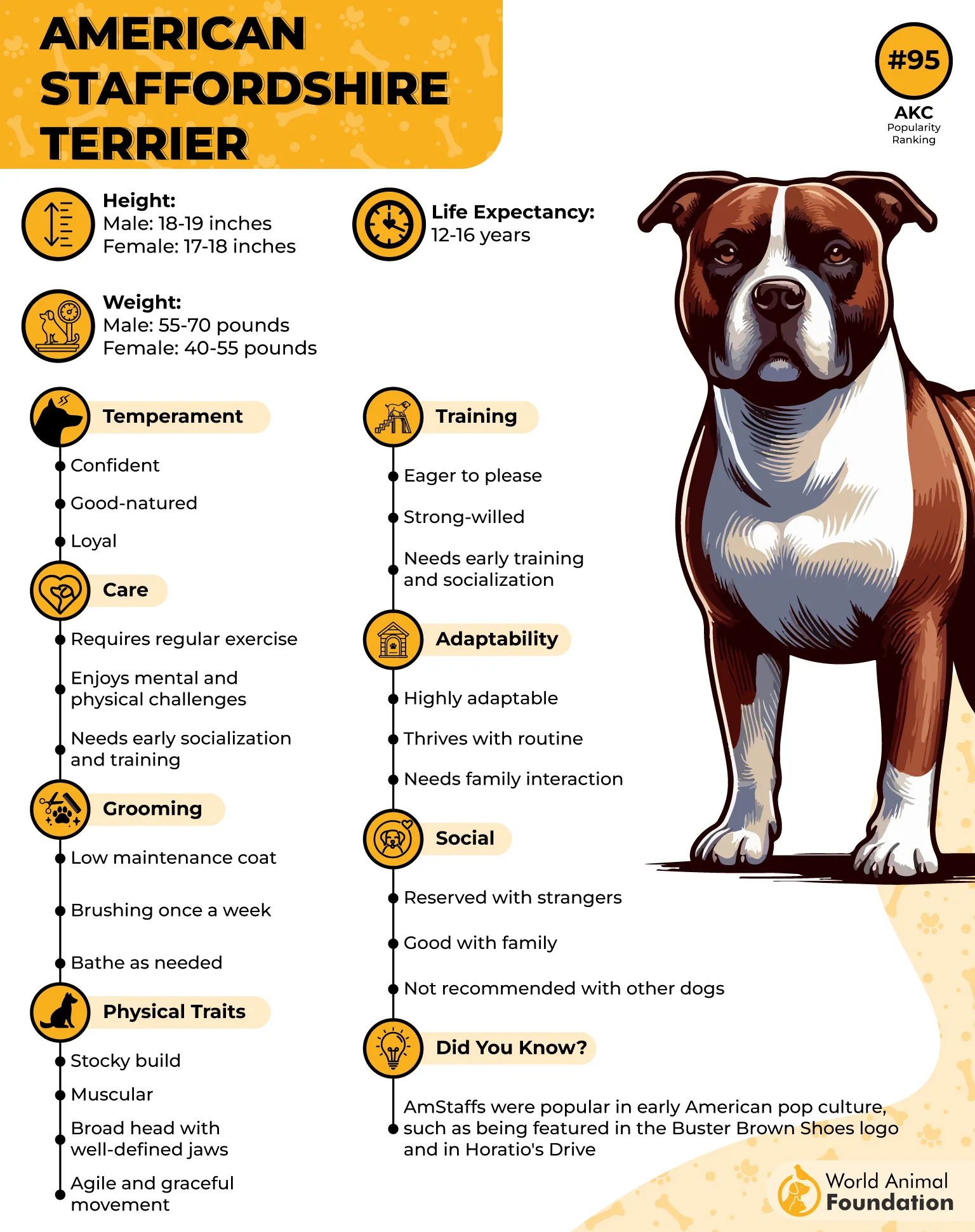
Quiet but Emotionally Connected
They’re not excessive barkers and usually stay quiet unless they sense a reason to react, as per PetMD. That quiet temperament fits well into buildings with noise-sensitive walls or neighbors. Their affectionate side shows in close physical presence rather than loud behavior.
Solid Temperament, Built for Stability
Their results in temperament evaluations have shown strong emotional control and low reactivity. They’ve passed therapy dog qualifications due to their steady and people-focused nature.
2. Basset Hound

With short legs and a heavy body, Basset Hounds tend to conserve energy and move slowly around the home. Their relaxed pace makes them easier to manage in smaller spaces. They often nap for long stretches throughout the day without demanding constant activity.
Independent but Still Social
They are generally content spending time alone, but still enjoy human presence without constantly seeking it. Their independence helps prevent separation issues that affect other scent hounds. A consistent routine keeps their behavior balanced in shared living areas.
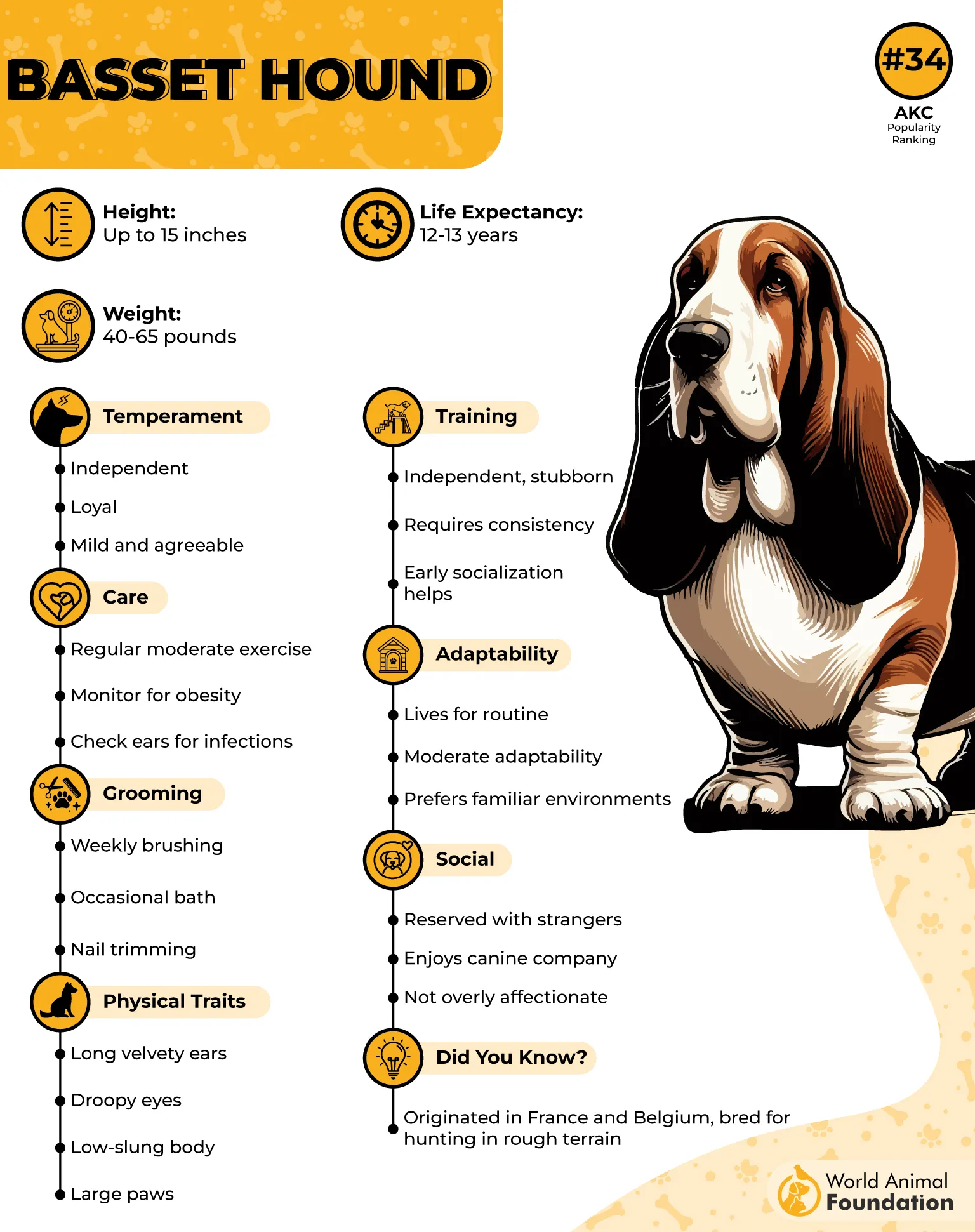
Sound Sensitivity and Controlled Barking
While they have a deep voice, they don’t bark excessively unless provoked or excited. They respond well to calm indoor settings, especially when socialized properly. Ear care is important in apartments due to their long, low-hanging shape and indoor allergens.
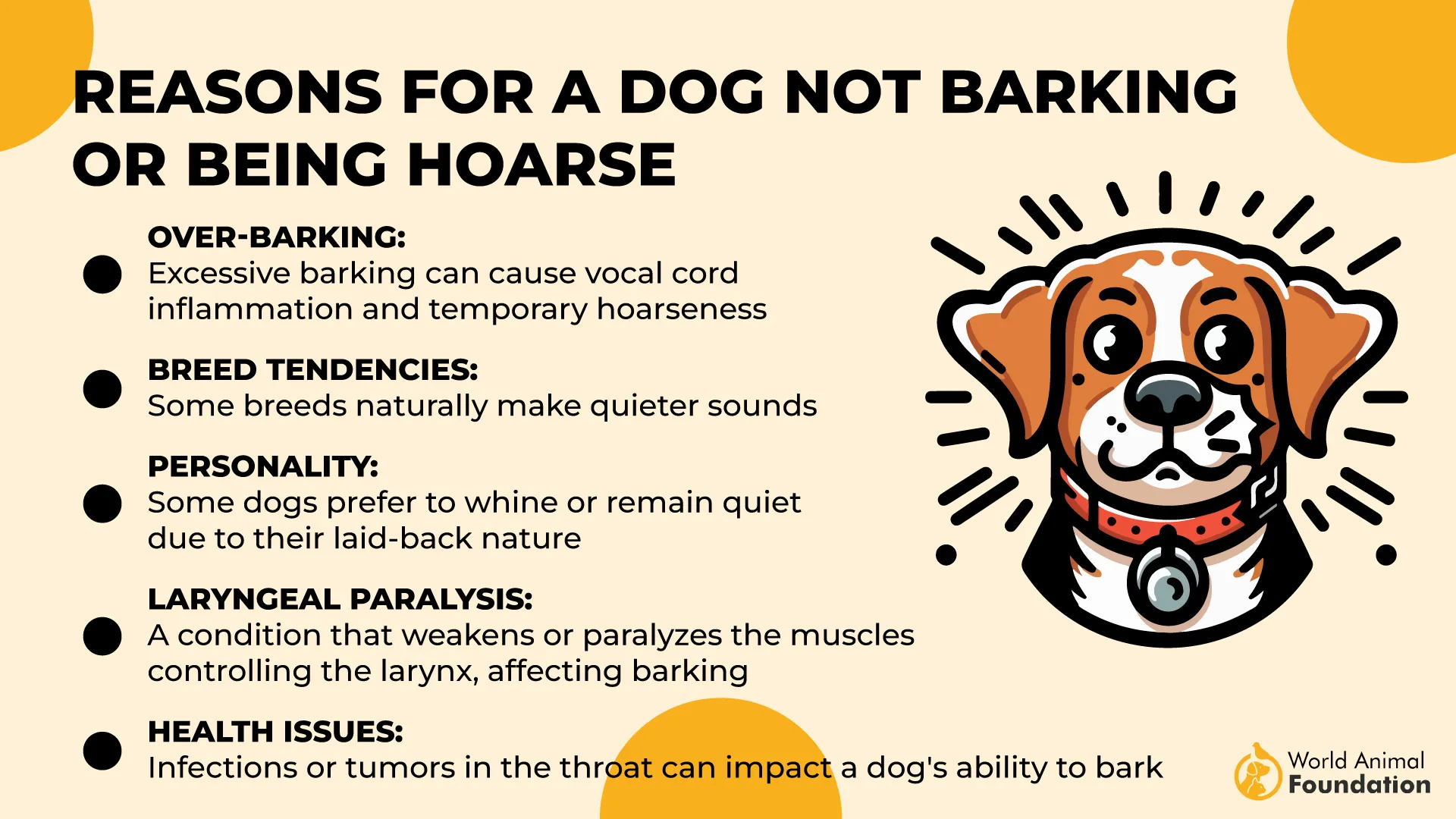
Breed Traits Useful for Apartment Living
Because they’re heavy-bodied and less reactive, they tend to adapt easily to apartment life with moderate daily walks, as per the AKC. Their predictability appeals to first-time dog owners looking for manageable behavior indoors. With responsible pet ownership, they make quiet, loyal companions in compact homes.
3. Bulldog
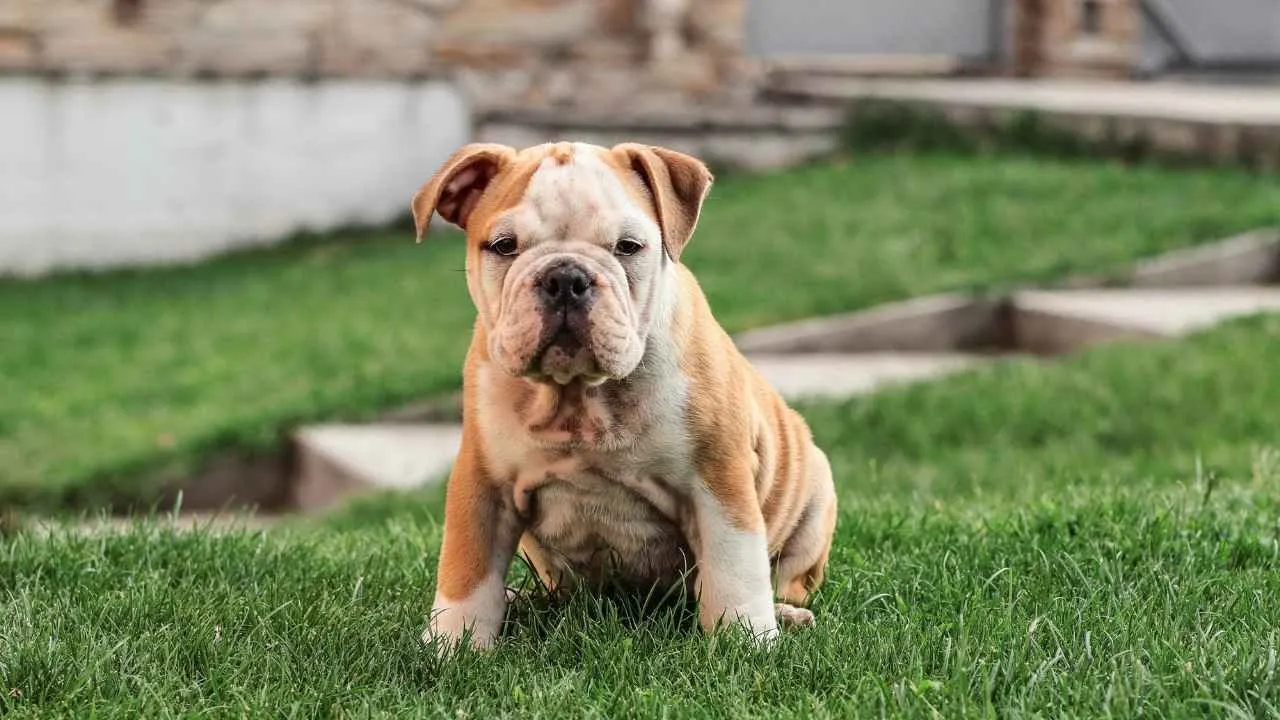
Bulldogs are among the few breeds whose energy level matches apartment life with little effort. They prefer lounging on cool floors and often nap between short walks. Their relaxed nature reduces the need for constant activity inside small homes.
Quiet Demeanor in Shared Spaces
They rarely bark, which suits apartment buildings where noise travels easily through walls. Their calm presence allows them to blend into daily routines without drawing attention. With proper ventilation and cool spots, they adjust well even in urban flats.
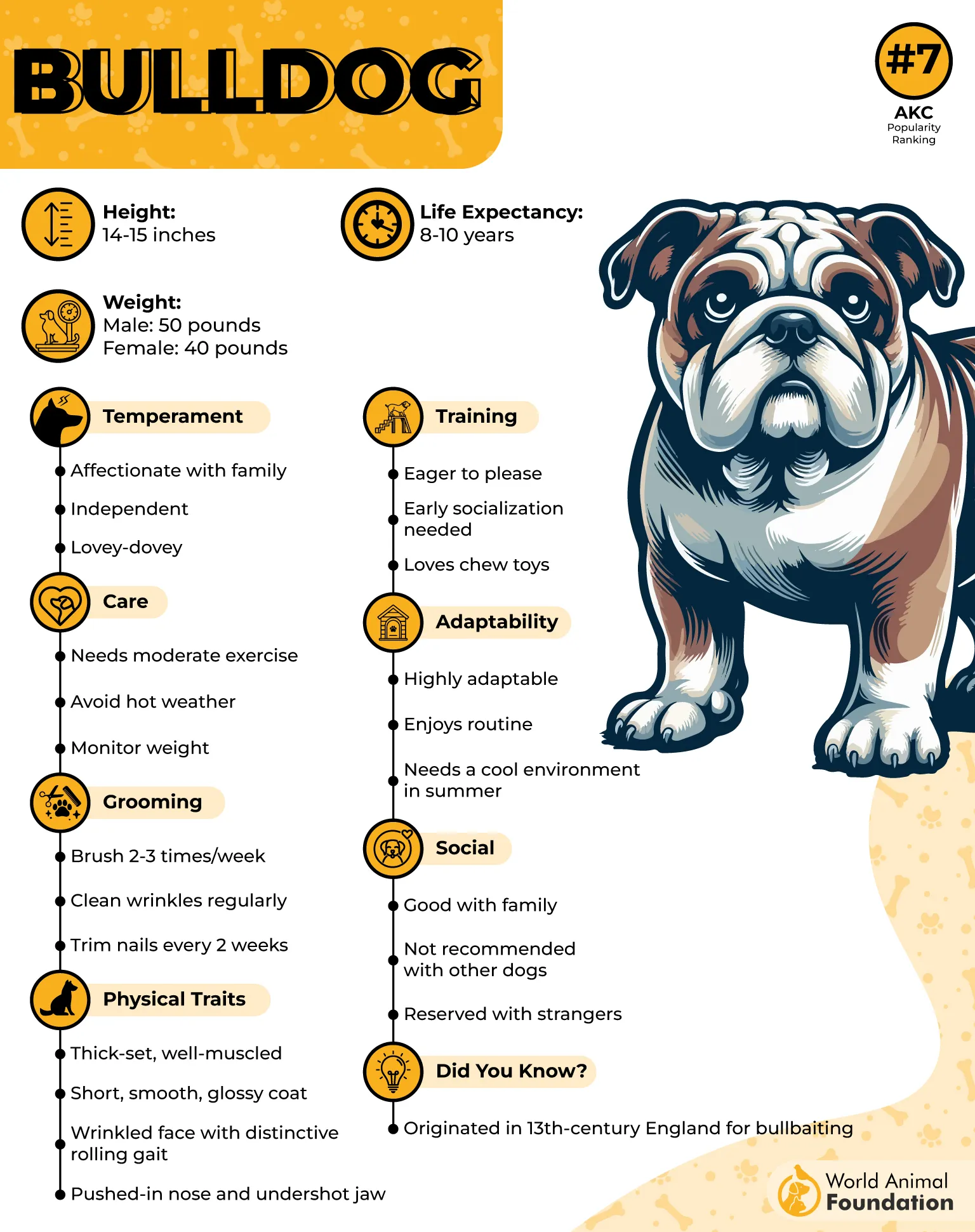
Comfort-Seeking by Nature
They enjoy close physical contact and tend to seek shaded corners, low steps, or padded rugs. Heat sensitivity means air-conditioned rooms or fans become essential in warmer weather. Their routines revolve around comfort, stillness, and slow movement.
Controlled Socialization and Short Play
Their interactions in common areas, like a dog park, are usually mellow and short-lived. They’re social without being overly playful, often greeting others with brief attention. Among apartment dogs, they stand out for predictability, space-awareness, and gentle companionship.
4. Shiba Inu
Shiba Inus tend to enjoy their own space and don’t constantly seek human attention. This independent streak suits quieter households where space and interaction are balanced. They often settle quietly in a corner, observing rather than engaging unless called.
Naturally Clean and Odor-Free
One of the breed’s standout traits is their fastidious grooming habits, much like a cat. They rarely carry a strong odor and usually avoid dirty or wet areas. This makes cleanup easier and limits the mess inside compact apartment spaces.
Quiet with Alert Awareness
They’re not known for barking unnecessarily and usually reserve vocalizations for unfamiliar activity or excitement. Apartment noise doesn’t usually bother them unless it feels threatening. This measured response helps them fit into spaces shared with neighbors.
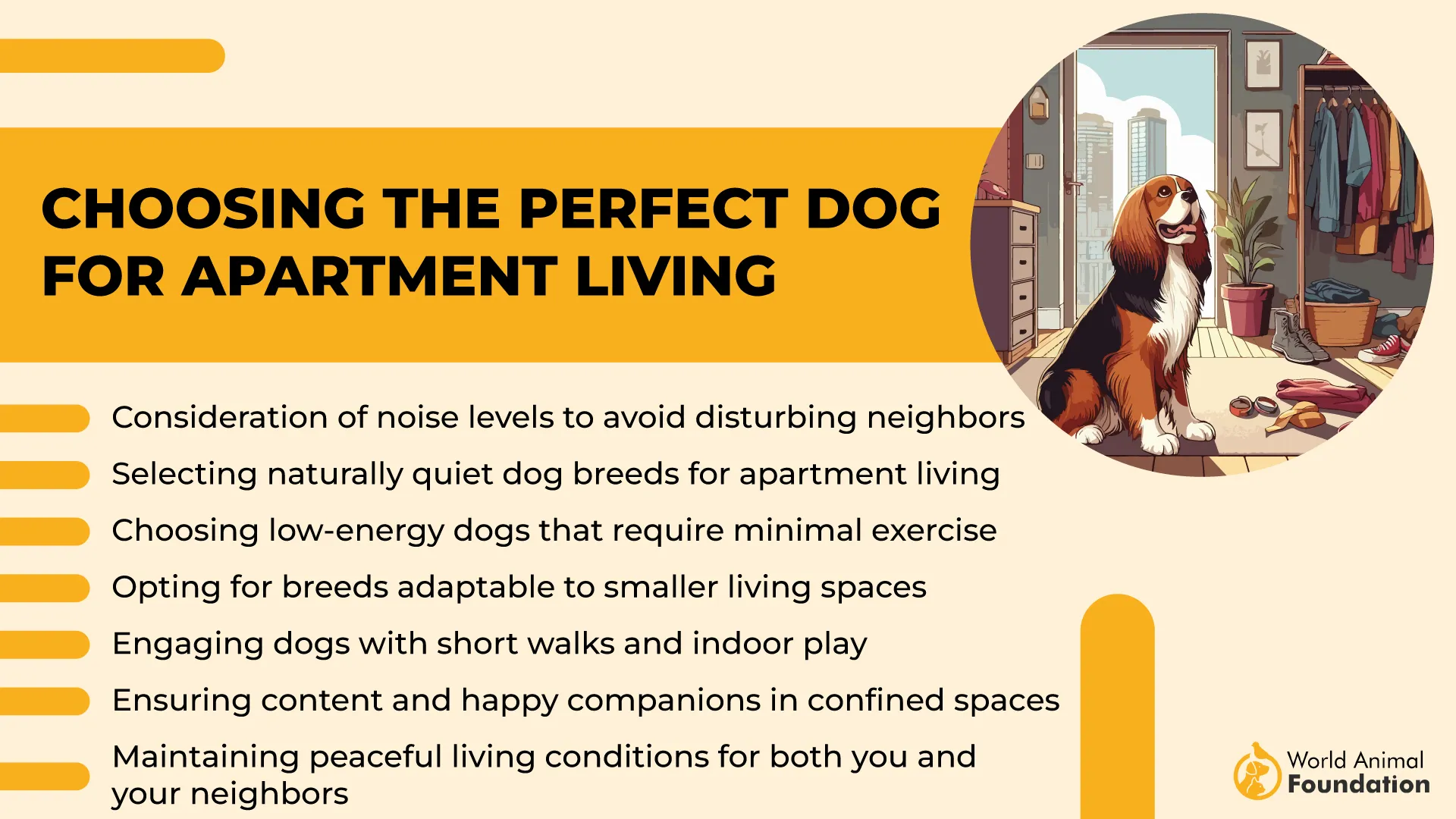
Compact Build with High Agility
Despite their agility and speed outdoors, they move gracefully indoors without knocking things over. Their medium size fits comfortably into small homes, requiring just moderate daily activity. Among breeds suitable for apartment dwellers, they’re often ranked as the best dog for quiet owners.
5. Whippet
Whippets are content with moderate daily walks and long stretches of quiet relaxation indoors. Their slim bodies and gentle temperament make them easy to manage in small homes. They are sensitive to noise and prefer peaceful, predictable environments.
Naturally Reserved and House-Aware
They’re not jumpy or loud, and their quiet personality helps them settle into apartment life with ease. Whippets are unlikely to bark unnecessarily or pace around when the house is calm. That reserve is something owners often appreciate in shared buildings.
Social but Nonintrusive
Whippets usually do well living alongside other dogs, provided the setting isn’t chaotic or overly energetic, as per WebMD. They’re polite and tend to coexist peacefully rather than seek constant attention. Their presence feels soft, both in behavior and physical interaction.
Clean, Odor-Free, and Low Maintenance
They have almost no doggy smell, shed minimally, and don’t carry dirt around like many heavier-coated breeds. Their grooming needs are very light, often limited to a soft brush and occasional bath. For someone seeking the right dog with grace and minimal mess, they quietly fit the bill.
6. Barbet
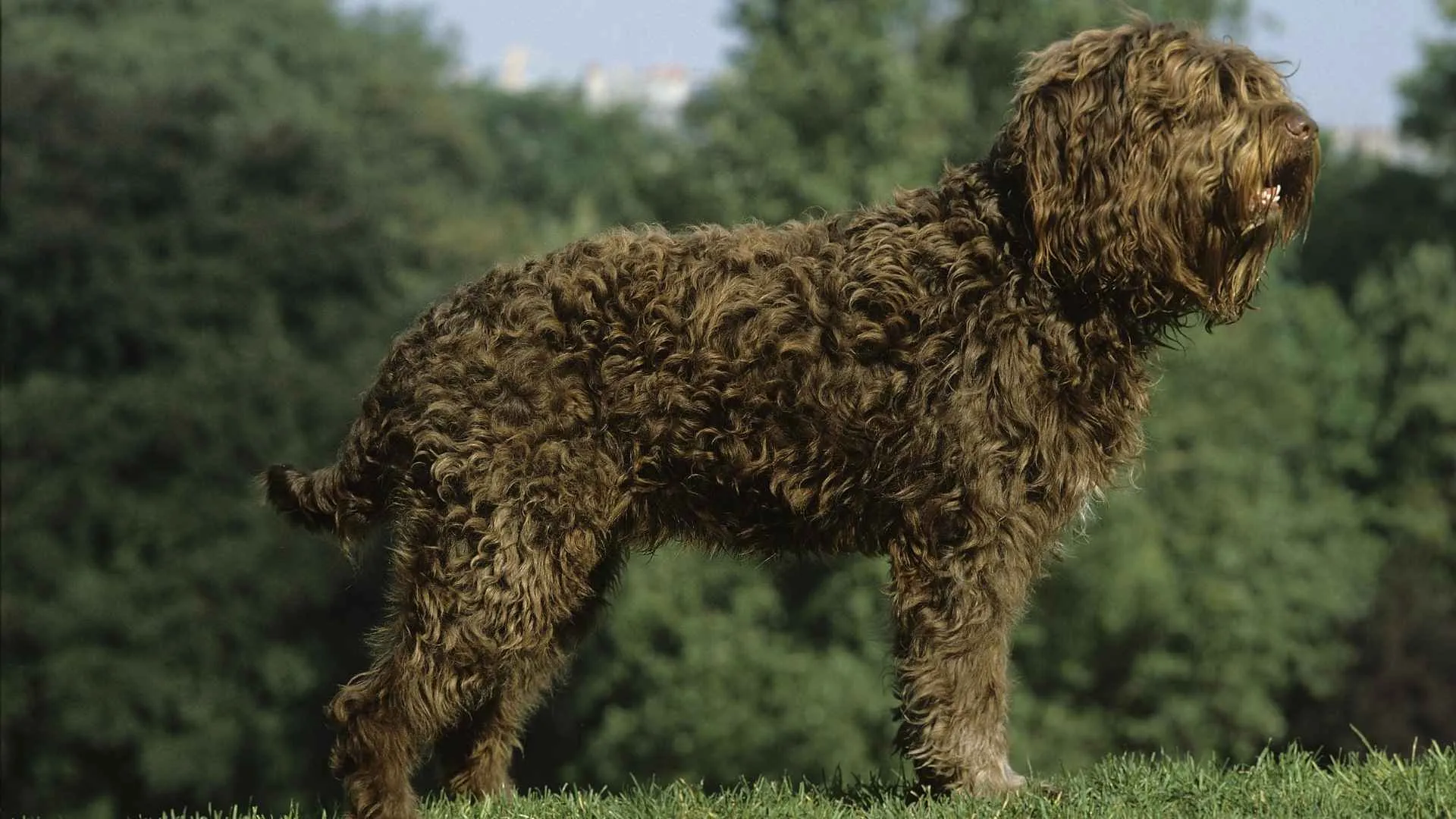
The Barbet is known for its even, calm temperament, which works well in shared apartment settings. They’re not known for barking unnecessarily and usually stay relaxed indoors. That controlled behavior helps them adjust well to quiet, compact living environments.
Coat Demands but Doesn’t Shed
Barbets have a thick, curly coat that doesn’t shed much but does require regular care to stay manageable. Their grooming routine usually involves detangling and trimming to avoid dense matting. This coat keeps dander minimal, which many apartment dwellers appreciate.
Well-Balanced Energy for Apartment Life
They enjoy physical activity but can settle easily after play, as long as their exercise needs are met. Daily structured walks and short bursts of play keep them mentally and physically satisfied. They’re not hyper indoors and handle downtime calmly.
Steady Temperament and Trainability
Barbets are people-focused and eager to learn, which helps in small spaces with consistent routines. Their adaptable nature makes them a smart pick for first-time owners who want a trainable and socially balanced companion. They’re also generally healthy, with few breed-specific complications.
7. Basenji
Basenjis are famously low on barking, making them one of the most sound-friendly breeds for apartment living. They tend to stay calm and alert indoors without reacting to minor external noise. This quiet behavior helps them blend well into shared walls and tight living setups.
Compact Body with Clean Habits
They have a small, muscular frame that doesn’t take up much space, even in smaller apartments. Grooming needs are minimal due to their short coat and naturally low odor. Their instinctive self-cleaning habits resemble those of a cat and reduce indoor mess.
Independent with Focused Attention
While they don’t constantly seek interaction, Basenjis form strong bonds and respond well when engagement is on their terms. Their independence keeps them comfortable when left alone for short periods. They’re highly observant and often track household activity with subtle curiosity.
Active Indoors with Short Play Bursts
They enjoy short, energetic spurts of play, often chasing soft toys or racing around furniture briefly before settling down. Their energy doesn’t require long outdoor walks if indoor stimulation is provided. Puzzle toys and climbing access can satisfy their movement needs indoors.
Conclusion
Living in an apartment doesn’t mean settling for a small dog—or avoiding an active dog entirely. Many medium dog breeds offer the perfect mix of presence, patience, and control.
Some behave like gentle giants in smaller frames, while others match calm routines with bursts of quiet energy. With the right structure, even breeds once thought too busy for apartment life adapt well with moderate exercise and steady routines.
These are dog breeds suitable for modern city living: clean, quiet, and respectful of space. And most importantly, they’re gentle dogs who bring peace without the hassle of excessive barking or heavy demands.


